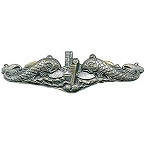ExNusquam
Posts: 513
Joined: 3/4/2014
From: Washington, D.C.
Status: offline

|
From Caygill's "Flying the Buccaneer", p.74
quote:
By the mid to late 1960s the increased sophistication of Soviet defensive systems meant that the chances of a successful strike with acceptable losses when using conventional 'iron' bombs was becoming less likely. The limitations of the Buccaneer's weapons system for this type of attack were also a concern and there was a pressing need for the introduction of some form of stand-off capability.
p.78
quote:
When carrying out conventional bombing attacks, in order to achieve the required damage levels it was necessary to saturate the defences to the extent that sufficient weapons reached the target. To do this, co-ordinated attacks were made by formations of Buccaneers. These involved up to eight aircraft with a mix of attack modes being adopted, the first using the relatively invulnerable toss mode to soften up the target's defensive capability before the second wave struck with highly vulnerable, but more accurate visual attacks. Such co-ordinated attacks were easy to get wrong...
So to answer your question, conventional attacks on USSR ships by the 70's was not likely to be successful. If you must do it, hit from multiple directions with enough aircraft to ensure that the ship is killed despite losses, and against a group it would likely be impossible to do without taking unacceptable losses. Stephen Coonts (former A-6 pilot) has written fiction about doing doing anti-ship attacks where an A-6 would be paired with an EA-6 for cover. I haven't actually tried that tactic in CMANO, but it could be interesting.
In 1973 however, your A-6s and A-7s should have access to Walleye's, which should give you enough standoff to avoid the worst of the defenses, especially since you can turn outbound as soon as the weapons are in the air. Walleye's do have limitations, but given the low Pk of Soviet SAMs (SA-N-1), you should be able to work around them.
|
 Printable Version
Printable Version








 New Messages
New Messages No New Messages
No New Messages Hot Topic w/ New Messages
Hot Topic w/ New Messages Hot Topic w/o New Messages
Hot Topic w/o New Messages Locked w/ New Messages
Locked w/ New Messages Locked w/o New Messages
Locked w/o New Messages Post New Thread
Post New Thread